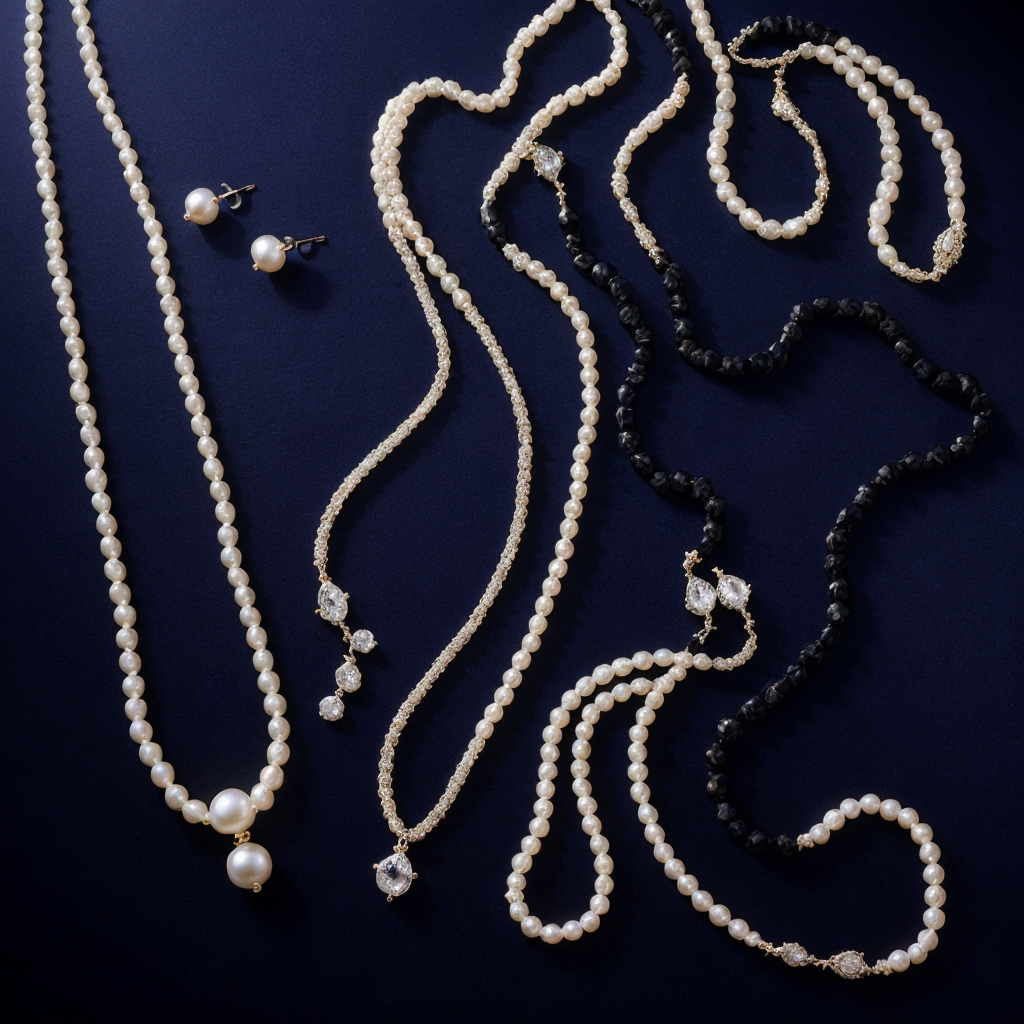The Timeless Appeal of Pearls
The allure of pearls has transcended centuries, captivating the imagination of civilizations from ancient times to the modern era. Historically, pearls have been coveted for their rarity and natural beauty, often symbolizing purity, wealth, and sophistication. In ancient Egypt, Cleopatra famously dissolved a pearl in vinegar to win a bet, showcasing both her wealth and the intrinsic value of pearls. Similarly, Queen Elizabeth I of England adorned herself with multiple strands of pearls, solidifying her regal image and reinforcing pearls as symbols of nobility and elegance.
Throughout history, pearls have been perceived as emblems of purity and status across various cultures. In ancient Rome, pearls were considered the ultimate status symbol, often worn by the elite and used as a means of displaying wealth. In Asia, pearls were believed to possess mystical properties, symbolizing wisdom and longevity. The appeal of pearls continued into the 20th century, with fashion icons like Coco Chanel popularizing their use in modern jewelry. Chanel’s penchant for layering pearl necklaces transformed them into a staple of chic sophistication, underscoring their timeless elegance.
The diversity of pearls adds to their enduring charm. Natural pearls, formed without human intervention, are exceedingly rare and highly prized. Cultured pearls, on the other hand, are created with human assistance and are more commonly found in the market. Freshwater pearls, typically cultivated in lakes and rivers, offer a variety of shapes and colors, making them a versatile choice for contemporary jewelry designs. Saltwater pearls, including the renowned Akoya, Tahitian, and South Sea pearls, are celebrated for their lustrous sheen and round symmetry. Each type of pearl has its unique characteristics, contributing to their individual appeal and value.
Pearls also come in an array of shapes, sizes, and colors, further enhancing their versatility. Round pearls are often considered the most classic and valuable, while baroque pearls, with their irregular shapes, offer a distinct, artistic appeal. Pearls can range from the traditional white and cream to more exotic hues such as black, pink, and gold. These variations in form and color not only influence their market value but also allow pearls to be tailored to diverse tastes and styles, ensuring their continued relevance in the ever-evolving world of jewelry.
Pearls in Contemporary Jewelry Design
In contemporary jewelry design, pearls have transcended their traditional associations with classic elegance to become symbols of modern sophistication. Today’s designers are pushing the boundaries of how pearls are used, creating pieces that blend timeless beauty with cutting-edge trends. One significant movement in current pearl jewelry design is the shift towards minimalist aesthetics. Simple, clean lines and understated elegance dominate, allowing the natural luster of pearls to take center stage. Pearls are often set in sleek, modern settings that emphasize their inherent beauty without overwhelming it.
Another trend is the innovative use of mixed materials. Designers are increasingly pairing pearls with unconventional elements such as leather, wood, or even steel, creating a striking contrast that highlights the pearls’ organic origins while adding a contemporary twist. This approach makes pearls more accessible and versatile, suitable for everyday wear as well as special occasions. For instance, a pearl necklace combined with a leather cord can be both chic and casual, appealing to a wide range of fashion sensibilities.
Innovative settings also play a crucial role in reimagining pearls. Designers experiment with asymmetrical arrangements, unique clasps, and geometric forms that break away from traditional pearl strands and studs. Such creativity is evident in the works of leading jewelry designers and brands. Mikimoto, a pioneer in cultured pearls, continues to innovate with modern designs that retain a sense of timeless elegance. Tiffany & Co. and Cartier also integrate pearls into their collections, showcasing them in fresh and unexpected ways.
Pearls are now featured in various types of jewelry, from necklaces and earrings to bracelets and rings. Modern interpretations often include single pearl pendants, pearl-studded hoops, and delicate pearl rings. These designs cater to a contemporary audience that values both tradition and innovation.
Ethical and sustainable practices in pearl farming have also become increasingly important. As consumers become more conscious of the environmental and social impacts of their purchases, many jewelers are adopting sustainable methods. This includes responsible pearl farming practices that ensure minimal environmental damage and fair labor conditions. Such practices not only benefit the environment and local communities but also enhance the appeal of pearl jewelry for the conscientious consumer.

No responses yet